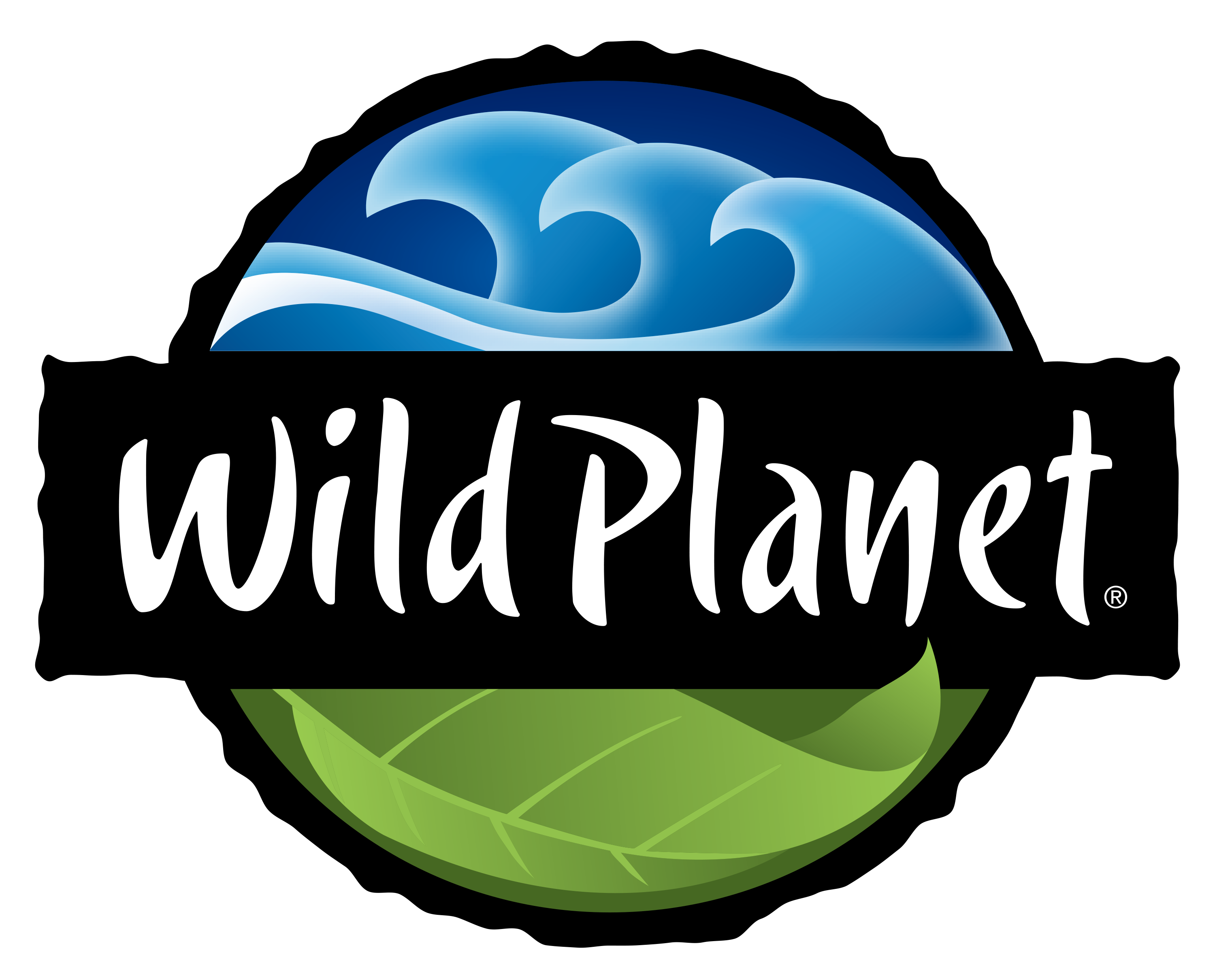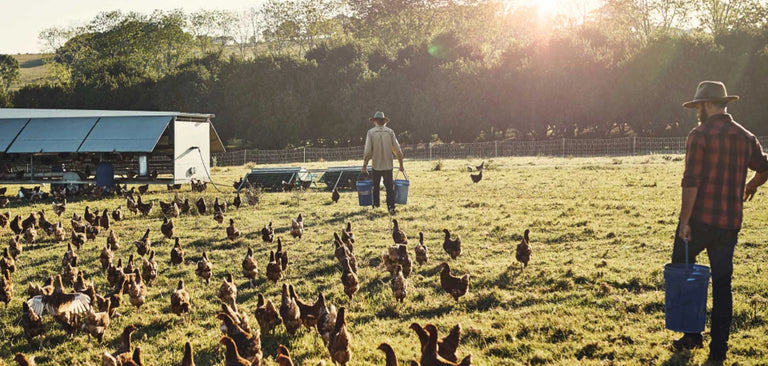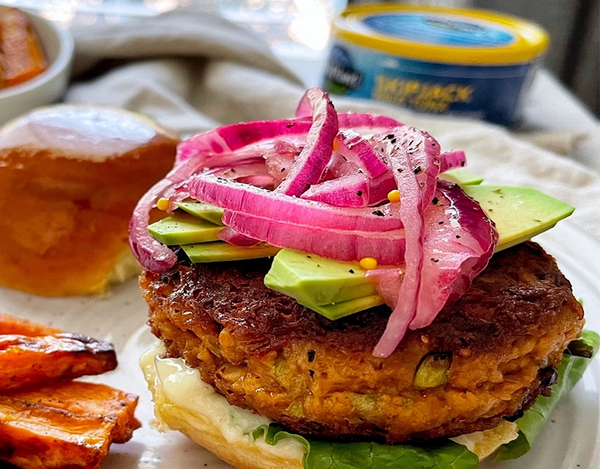September is Organic Month, a time to celebrate and discuss the importance of organic farming, organic food, and organic soil. What we do to harvest crops impacts both the land and the oceans. While chemical herbicides, fertilizers, and pesticides from conventional farming methods cause harm, organic methods help eliminate algal blooms and ocean dead zones.

Our planet isn’t one, solid rock, but is instead an incredible mix of ecosystems, each one consisting of different environments, living organisms, and nonliving material. These ecosystems are intimately connected on all levels; none of them exist in a vacuum. Learning more about how our land and our oceans are connected helps us focus our daily decisions so we better understand what we can all do to sustain abundant, wild oceans for ourselves and future generations.
So, how are these ecosystems connected? Oftentimes, through rivers and streams. As we discuss below in greater detail, materials - both organic and chemical - which are introduced to our land then move into waterways. When these waterways connect in open watersheds, they drain into the ocean, thereby introducing what started on land into an entirely new ecosystem. With this relationship between people, land, and ocean, we believe organic agriculture is one of the most important practices we can support to protect our oceans and produce high-quality food.
What is organic farming?
According to the USDA, organic agriculture or organic farming is “a production system that is managed to respond to site-specific conditions by integrating cultural, biological, and mechanical practices that foster cycling of resources, promote ecological balance, and conserve biodiversity” [2].
In practice, this means that organic farms focus on the following [2]:
- Cover crops, green manures, animal manures, and crop rotations to fertilize the soil and maintain long-term soil health
- Use of crop rotations and similar techniques to manage weeds, insects, and diseases
- Biodiversity both of the agricultural system and the surrounding environment
- Rotational grazing and mixed forage pastures
- Elimination of synthetic pesticides, herbicides, and fertilizers
- Soil and water conservation
These practices are prioritized to protect our land, our oceans, our food, and our health.

How does chemical farming harm sea life? [3] [4]
An alternative to organic farming is chemical farming. These are farm practices that use chemical herbicides, fertilizers, and pesticides on crops. These chemical products drain from farmlands into rivers and then into oceans. Once there, the chemicals cause massive algal blooms. These blooms, and their eventual decomposition, significantly deplete oxygen levels in the water, harming marine life.
- Algal blooms [12]: These blooms prevent light from penetrating the water’s surface, harming plants and other organisms that require sunlight to survive. They also prevent organisms that live below them from absorbing oxygen. Where algal blooms exist, the number and diversity of bottom-dwelling ocean species are especially reduced. These blooms are sometimes referred to as red or brown tides.
- Hypoxia: Hypoxic, or dead zones, are areas that should be teeming with life, but instead are empty of marine organisms and fish. Hypoxia occurs when marine life dies from lack of oxygen and available nutrients. This is often caused by the decomposition of algal blooms, as the decomposition process depletes most of the oxygen levels in the water [12]. In 2022, the Gulf of Mexico dead zone was approximately 3,275 square miles [4]. Its size varies every year, and it has been as large as 8,494 square miles, or the size of Massachusetts [12]. It is only one of 415 dead zones identified by scientists around the world [12]. These dead zones can occur naturally, but scientists are concerned about the ones created or enhanced by human activity.
Researchers agree that chemical agriculture poses the same threat to marine life as overfishing and habitat loss.

How does organic farming help reduce water pollution?
Organic farming helps protect our oceans by minimizing or eliminating the runoff from synthetic herbicides, fertilizers, and pesticides.
One USDA study collected data over three years to compare fertilizer pollution from plots with organic and conventional crop rotations as well as organic pastureland [5]. The study specifically looked at the leaching of nitrate, a component of fertilizers, from farming soil into water drainage systems. Researchers found that:
- Nitrate loss via water in the conventional systems was twice as high as nitrate loss from organic cropping systems
- The organic pasture system lost the least amount of nitrate
How do we minimize herbicide, fertilizer, and pesticide pollution?
Organic farming involves understanding our planet and the intricate ways in which earth supports life. This means understanding soil.
The first important thing to know about soil layers, or soil horizons, is how they are defined [7] [8]:
- O: Organic horizon. This horizon includes detritus, leaf litter, and other organic material.
- A: Surface horizon or topsoil. This is where a lot of plant roots, bacteria, fungi, and small animals are found.
- B: Subsoil. This horizon is usually low in organic matter.
- C: Substratum. This is the transition area between soil and bedrock, also known as parent material.
The second important thing to know is about topsoil specifically. Topsoil is important for eliminating water pollution because it is this horizon that can hold onto water and nutrients until plants need them [6].
Half of the topsoil on the planet has been lost in the last 150 years from deforestation, overgrazing, and agrochemical use [9]. This increased soil erosion has a direct effect on water pollution. It means that more herbicides, pesticides, and fertilizers, as well as soil, are washing into waterways. This sedimentation and pollution damages water habitats and the communities that depend on them [9].
To help improve our topsoil and all soil horizons, we can work to improve soil organic matter. Organic matter is decomposed organic material, and organic material is anything that was alive and is now in or on the soil [10]. The four benefits of soil organic matter are [10] [11]:
Farms can build organic matter by reducing or eliminating tillage and growing cover crops.
How can we help protect our oceans?
- Support chemical-free agriculture by shopping for organic products
- Purchase pasture-raised and grass-fed meat and dairy products like organic roasted chicken and organic shredded beef
- Purchase seafood caught using sustainable fishing practices
- Compost
- Avoid chemical weed killers and lawn fertilizers
- Plant local flowers and plants in your gardens
- Volunteer at local farms and farmer’s markets to learn more from families practicing organic agriculture and sustainable fishing

By understanding how all environments are interconnected, we can better provide food that meets our current needs and ensures that our planet is protected for future generations. Together we are investing in the future health of our oceans, making a positive impact in our world, and preserving our wild, beautiful home for future generations.

Sources:
- https://serc.si.edu/research/research-topics/ecosystems-ecology/land-sea-interactions
- https://www.sare.org/publications/transitioning-to-organic-production/what-is-organic-farming/
- https://www.downtoearth.org/environment/organic-vs-conventional-farming/ocean-dead-zone-solution-buy-organic
- https://oceanservice.noaa.gov/facts/deadzone.html
- https://www.organic-center.org/research/organic-farming-methods-reduce-water-pollution
- https://pikeconservation.org/wp-content/uploads/Soil-One-Sheet.pdf
- https://www.worldwildlife.org/threats/soil-erosion-and-degradation
- https://www.noble.org/news/publications/ag-news-and-views/2001/august/what-does-organic-matter-do-in-soil/
- https://ec.europa.eu/eip/agriculture
- https://education.nationalgeographic.org/resource/dead-zone



